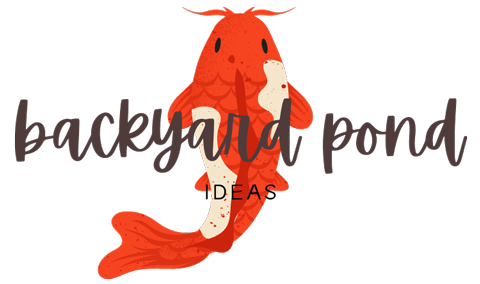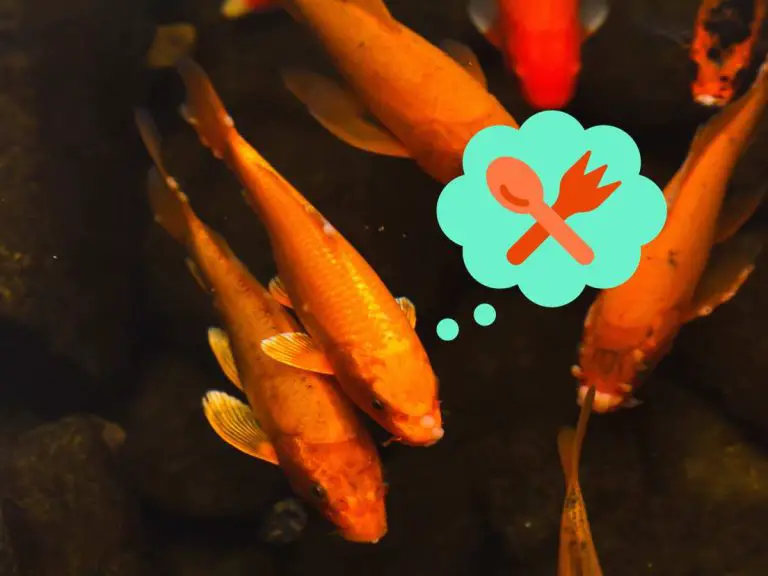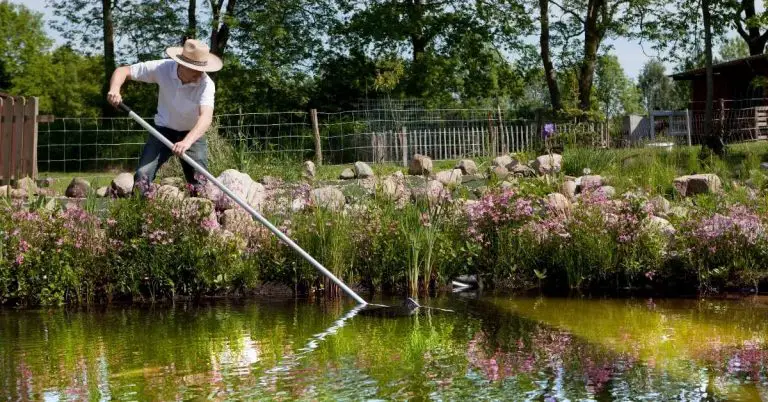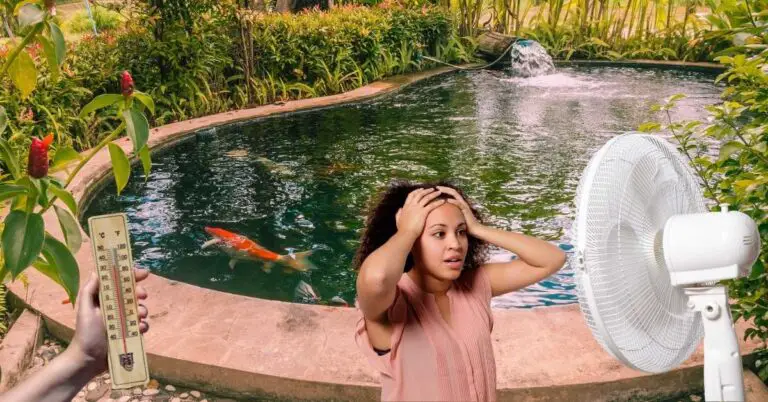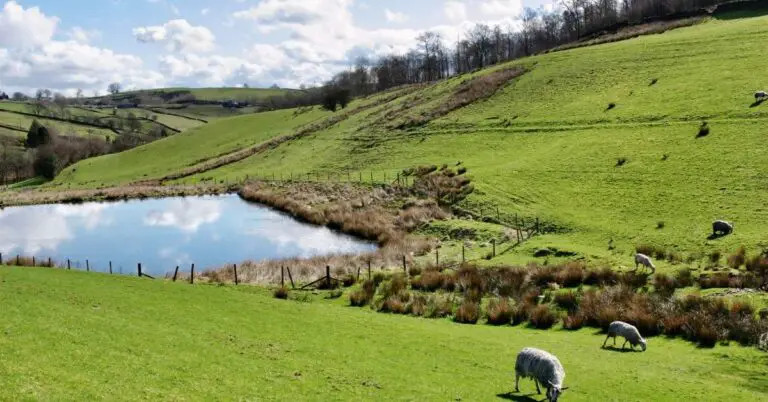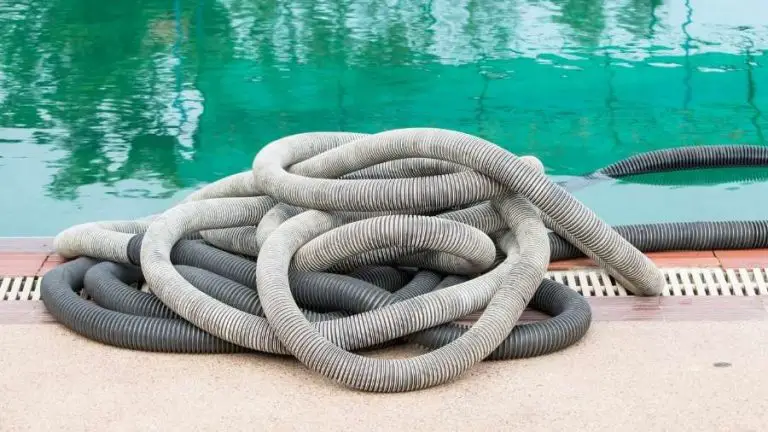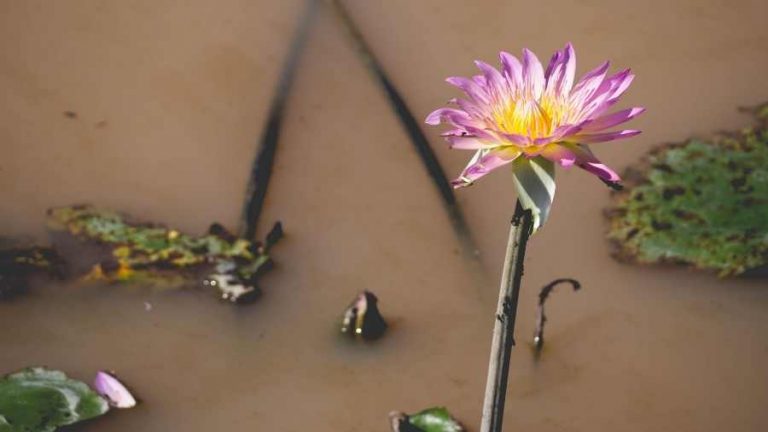Why Is A Backyard Pond An Ecosystem?
Your backyard or garden pond isn’t just a beautiful place to relax and dip your toes into the water every once in a while. It’s actually full of life and is in many ways a microcosm of nature at large. But can a backyard pond be considered an ecosystem?
A backyard or garden pond is considered an ecosystem because it fits all the criteria. As a small body of water surrounded by land, ponds contain all the necessary components, living and non-living, of a full-fledged ecosystem. You will find all 6 tiers of the food chain present in your pond as well, from the smallest phytoplankton all the way to fish, birds and other mammals.
When all of these parts of the food chain are balanced and healthy, your pond’s ecosystem will thrive. All that’s required is understanding which nutrients the different animals and micro-organisms need to survive and how to provide them with the right environment to remain sustainable.
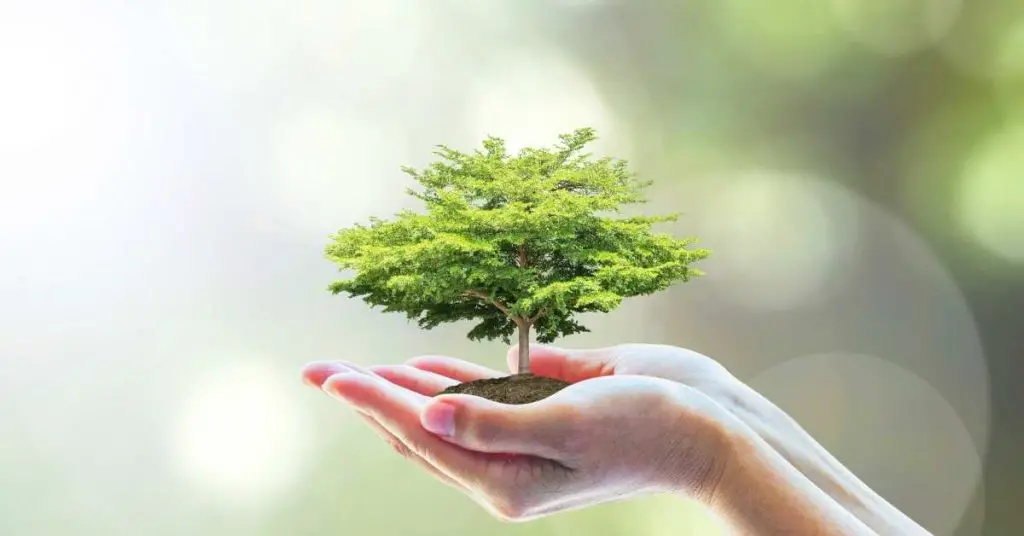
Backyard Pond Food Chain – The 6 Tiers
In any environment, including the one in your backyard or garden, we can see the different tiers of the food chain playing out. In the case of a pond there are 6 tiers to the food chain, or web, including plants, zooplankton, snails, amphibians, fish and mammals.
Let’s go over the different parts of the food chain and describe how they relate to the various parts of your pond.
These tiers are important to know when planning for the ecosystem of a garden pond because if any of them get out of balance, the others will inevitably suffer. If left unchecked, an improperly balanced food chain will throw your entire pond out-of-whack and you’ll quickly find dead plants and fish along with an overgrowth of murky green, algae-filled water.
Here is a great visual representation of the food chain present in most ponds you can use to follow along with the descriptions below.
Tier 1: Plants & Phytoplankton
Phytoplankton, more commonly known as algae, can be found in almost every body of water, including ponds. These tiny organisms feed on the nutrients present in the pond’s water and can multiply rapidly under the right conditions, especially during summer.
When algae growth reaches its full potential it forms a foul smelling mat-like surface on the water.
Algae overgrowth is generally considered a nuisance and can affect other life in your pond by sucking up valuable nutrients and preventing sunlight from penetrating the surface of the water.
This tier of the food chain also includes any plants you have living in and around the pond. In general, you want to keep your plants healthy and abundant and your algae as minimized as possible. Thankfully plants compete for the same food as algae so the more plants the less algae you’ll find growing in your pond.
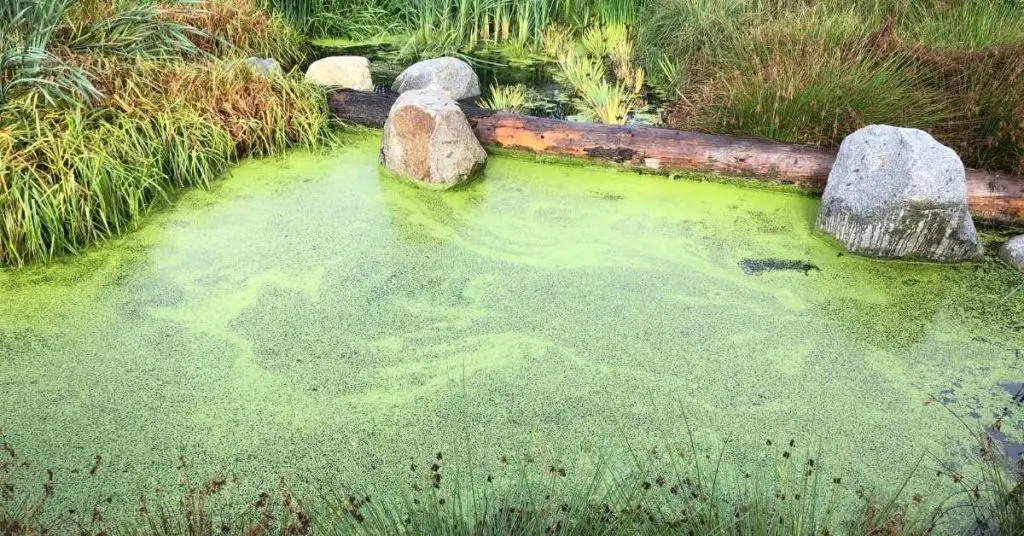
Tier 2: Zooplankton
The second tier of the food web is occupied primarily by Zooplankton. These are small, nearly microscopic animals that exist in almost all bodies of water from large oceans to small backyard ponds.
In ponds, the most numerous types of zooplankton come from the Cladocera and Copepod groups. These zooplankton are considered micro-crustaceans.
Zooplankton are in the middle part of the food chain as they eat algae and bacteria. They are in turn preyed up and eaten by insects and fish as well as other zooplankton species in your pond.
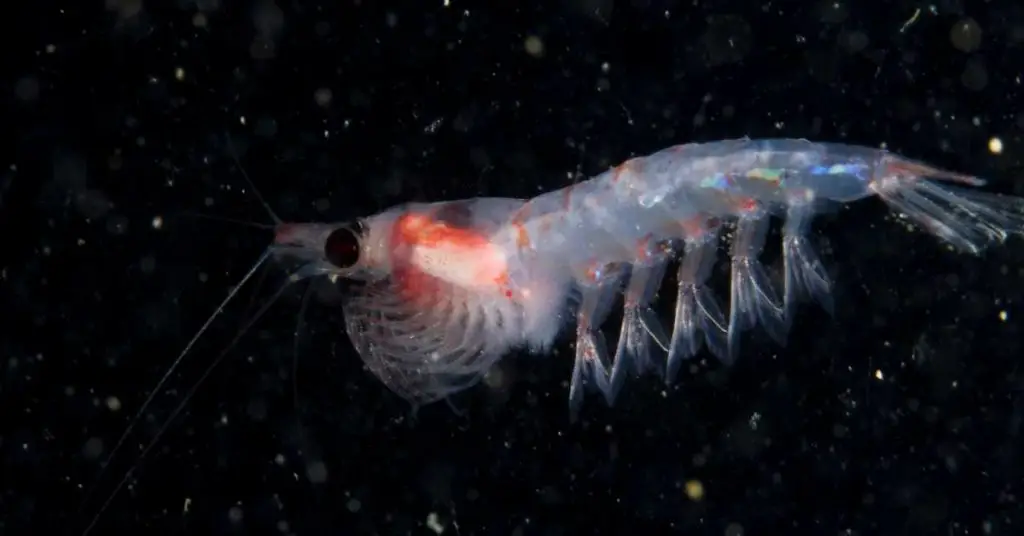
Tier 3: Snails, Juvenile Fish, Worms & Insects
Tier 3 of the food chain in a pond consists of shrimp, crayfish, mussels, juvenile fish and small minnows. These creatures form most of the food base for larger fish.
In turn, tier 3 pond creatures feed on all the lower levels of the food chain including plants, algae and zooplankton.
Tier 4: Amphibians
Tier 4 of a backyard pond’s food chain includes many common amphibians like snails, frogs and toads. These members of the food web feed on all the lower tiers of the food chain, especially insects.
Newts and Salamanders are similarly sized amphibians as well but are far more common at lakes and natural ponds.
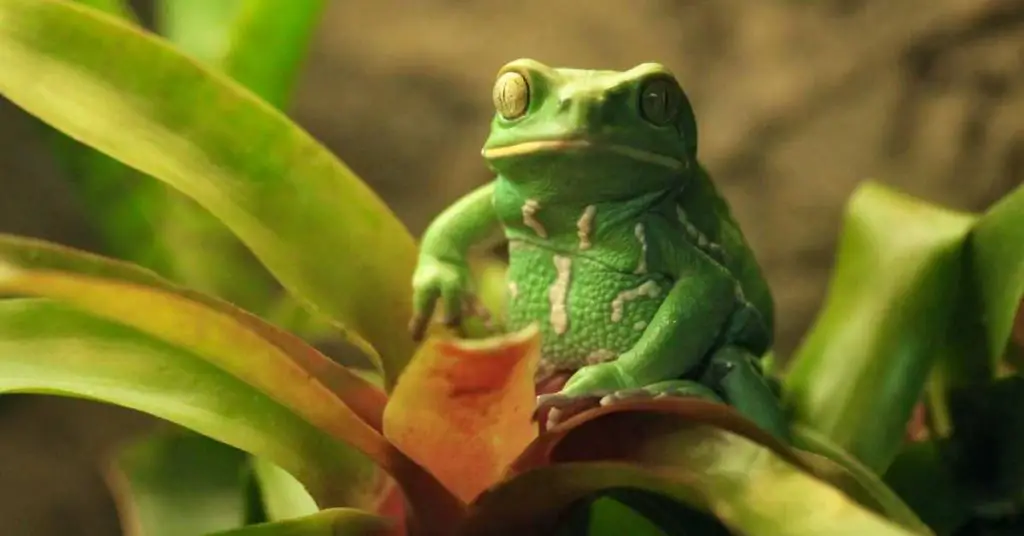
Tier 5: Fish
This tier of the food chain is occupied by the common types of fish people have in their ponds like koi, goldfish and mosquitofish. These fish feed on the lower levels of the food chain but are often fed artificially by humans to supplement their nutrition and encourage them to grow large.
Fish are a vital part in keeping a backyard pond’s ecosystem in check as they keep algae and insects in at low numbers. They’re also fun to look at and generally enjoyable to maintain.
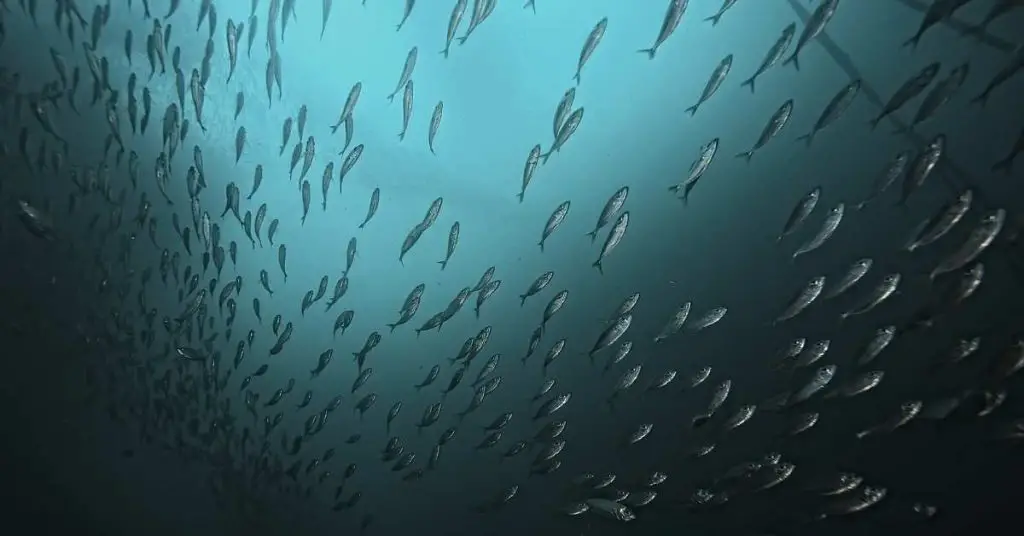
Tier 6: Birds, Mammals, Lizards
Small animals, birds and reptiles form the bulk of tier 6 of the pond food chain. They are an important part of the ecosystem because they have easy access to the environments outside of the pond and promote the health and vitality of each.
Just be aware that these sorts of creatures will eat up all your fish if your pond’s water is too shallow.
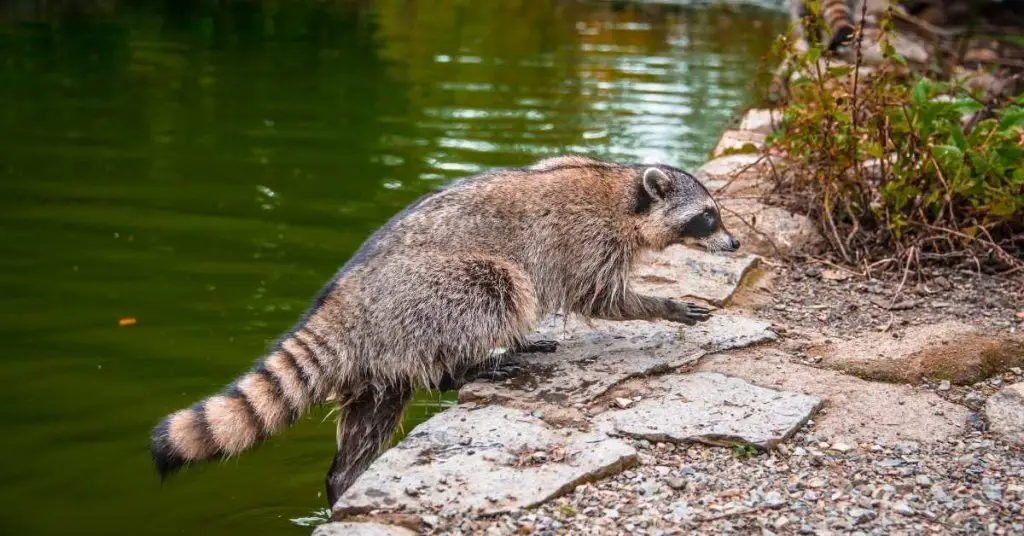
What You Need For A Balanced Backyard Pond Ecosystem
Animals and other living creatures are not the only vital part of a pond’s ecosystem. Non-living objects like rocks, pumps and filters also play an important role in keeping the pond’s sustainability intact.
Filter
A pond filtration system is all about keeping the pond’s surface free of debris such as leaves and twigs. This debris will eventually sink to the bottom of the pond and decay if not filtered first.
When too much debris decays it turns into nitrate which will fuel bad bacteria and algae growths that can throw off the balance of your pond’s ecosystem.
A good filter will minimize the amount of unwanted insect larvae and algae in the water as well.
Bio-Filter
A bio-filter works in the opposite way a normal filter does. Normal filters work by filtering out debris, but a bio-filter works by adding material into the water.
Bio-filters work by “culturing” your pond with beneficial bacteria that helps it to thrive. A filter media pad is placed inside the bio-filter that acts as a colony for bacteria to grow. So when water passes through the filter, this bacteria is propagated throughout the rest of your pond.
Bio-filter is completely organic since the bacteria that grows within it is naturally occurring anyways. This is a great choice for those looking to create a balanced ecosystem within their pond as the bacteria will help to keep plants and fish healthy while also minimizing algae and cyanobacteria growths.
Pump
A pump is a very common item found is almost every artificially constructed backyard or garden pond.
Pumps work by keeping water flowing and active within the pond. In this way the pump is really the life-force of your pond, especially if yours isn’t connected to a natural stream or other source of free flowing water.
When the pump is activated it will constantly aerate and oxygenate your pond’s water. What this does is incorporate air into the pond which then provides oxygen for the water, which fish and other aquatic organisms need to survive.
Having an actively moving, non-still water supply is also essential to minimize the growth of algae and cyanobacteria as they are constantly pushing water through your filtration system and bio-filters.
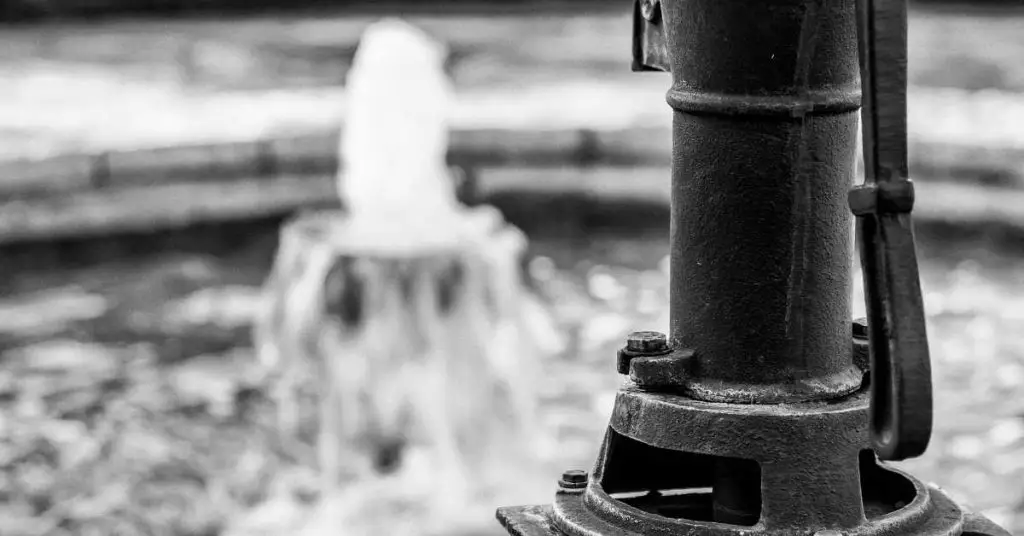
Rocks & Stones
Rocks and stones serve multiple purposes in your pond.
Most people purchase rocks for their ponds because they look beautiful and provide a nice environment for your fish to swim around.
Rock and stones also serve the purpose of keeping your pond liner firmly rooted at the base of the pond and provide some nice edging around the exterior.
But the most important purpose of any stones under or near the water is as a colony for beneficial bacteria. Just like the bio-filter we discussed earlier, stones attract bacteria and allow them a surface to grow on and colonize. The bigger the stone’s surface, the larger your bacteria colony will be.
Healthy bacteria will help to filter and consume nutrients so that algae and cyanobacteria won’t have any easy time establishing a foothold in your pond.
Fish
Fish are another important aspect of your pond’s ecosystem that service multiple purposes.
Fish feed on the lower ends of the food chain and so help to keep insects and bacteria under control. Some types of fish like koi and mosquitofish will even eat mosquitos that land on the water’s surface, especially when the water is particularly still.
Other types of fish are what’s known as “bottom-feeders” and will actually scour the bottom of the pond looking for debris and other nutrients to eat. This is a great addition to any pond as these nutrients will eventually lead to an overgrowth of algae if not cleaned up or consumed in some way first.
And of course, fish are great to look at. Just make sure you don’t add too many fish to your pond or they’ll produce too much waste for the rest of your pond’s ecosystem to deal with and will lead to murky water that will eventually turn into algae blooms.
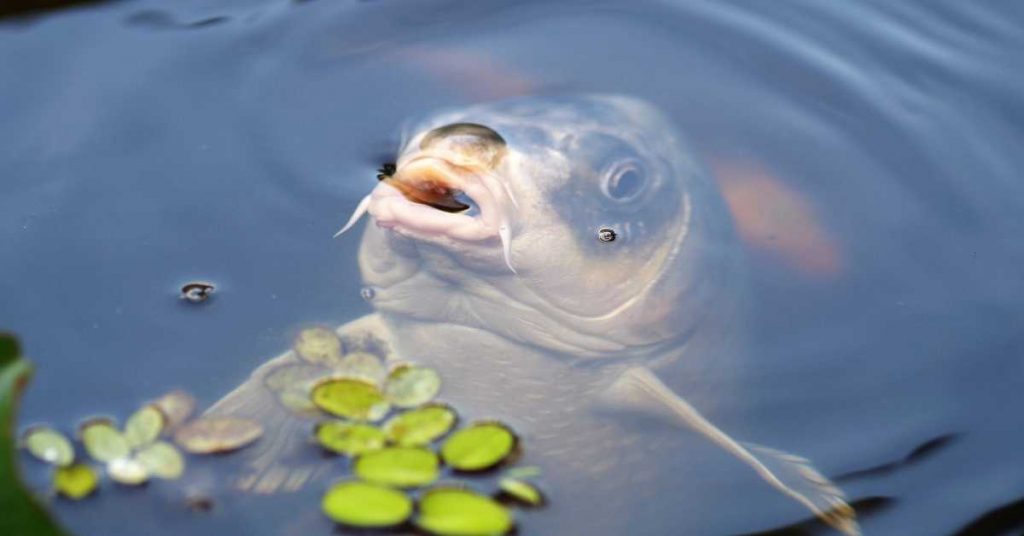
Plants
Plants are perhaps the cornerstone of your pond’s ecosystem.
Plants can survive and be planted in almost all parts of your pond, from the outer edges all the way to being completely submerged or even floating in the deepest water.
No matter where the plants are, they serve a similar purpose. Plants that are partially or completely submerged will suck up available nutrients like nitrate and prevent algae from spreading. They will also release valuable oxygen into the water, just like land plants release oxygen into the air. This oxygenates the water so that fish and other life can live within it.
Plants also are a vital source of food and nutrients for any fish you have living in your pond. So just remember that if you have fish, you’ll need to make sure you have extra plants around because your fish will be eating them and you’ll want to have plenty left over for filtering and oxygenation.
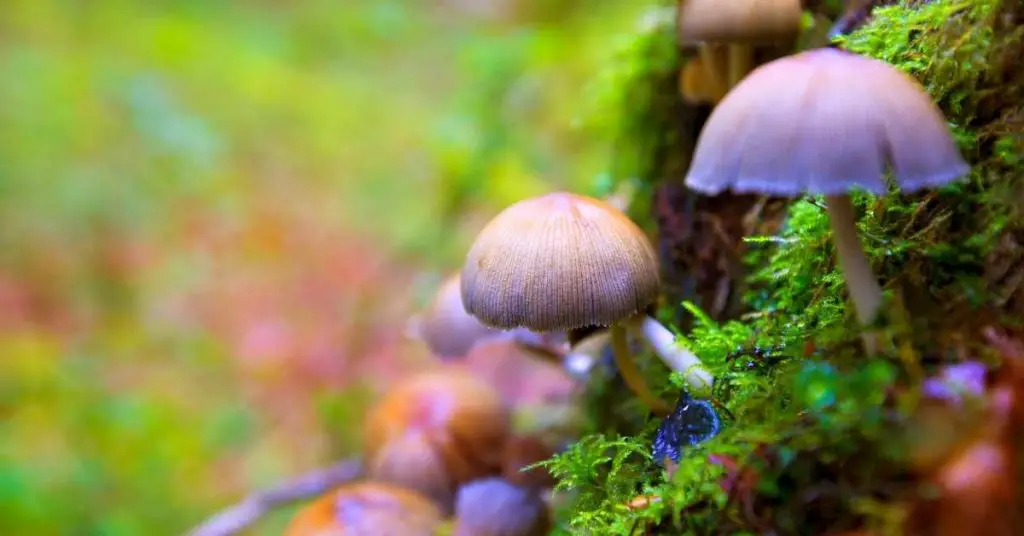
Final Thoughts
A pond’s ecosystem works the same as any ecosystem around any similarly small body of water.
But since your backyard pond hasn’t had the benefit of hundreds or thousands of years to balance itself out, you’ll have to take special steps to make sure its ecosystem has everything it needs.
The most important part for your pond’s ecosystem is making sure it has a well balanced food chain, or food web. This means having a good balance of each of the animals and organisms in each of the 6 tiers, from plants and algae all the way up the chain to fish, birds and other mammals.
In addition to a healthy and balanced food chain, your pond’s ecosystem needs a proper setup of all the non-living parts as well. This includes a well-planned pond with sufficient filtering, pumping and space for healthy bacteria to colonize like rocks and bio-filters.
So hopefully this has given you a good idea of not only why your pond is an ecosystem but also what you need to do to keep it healthy and balanced.
